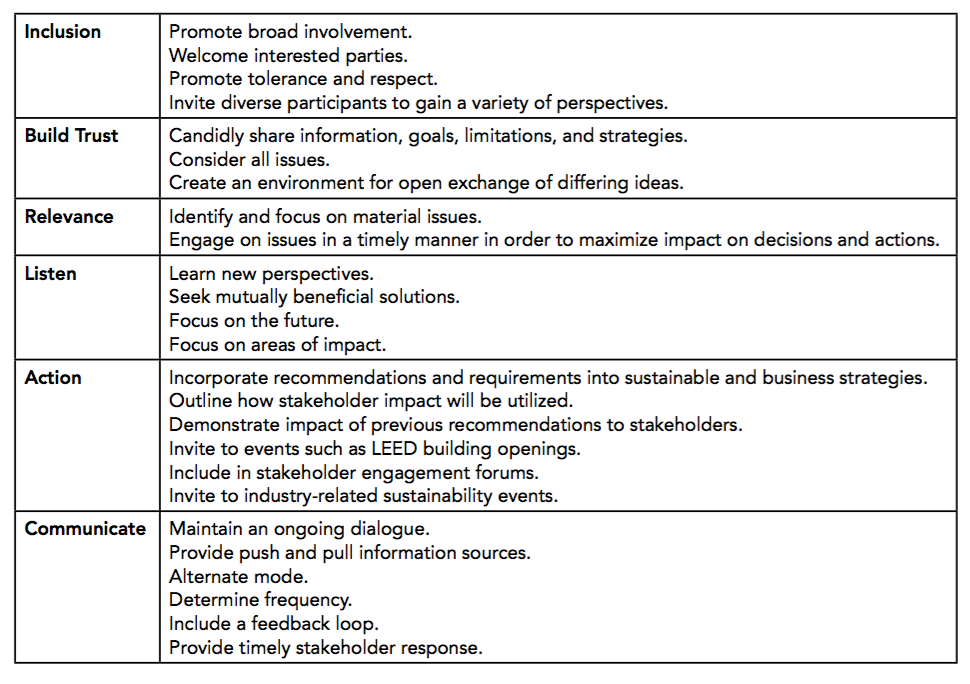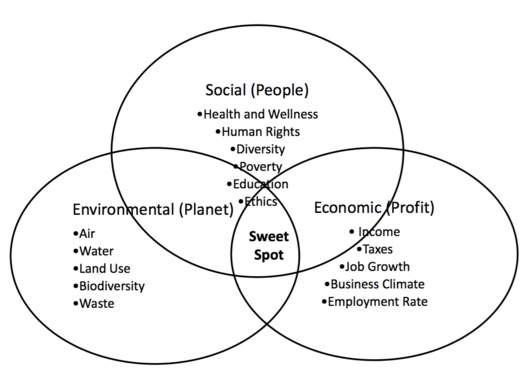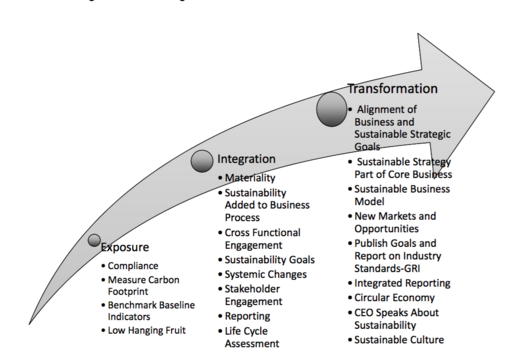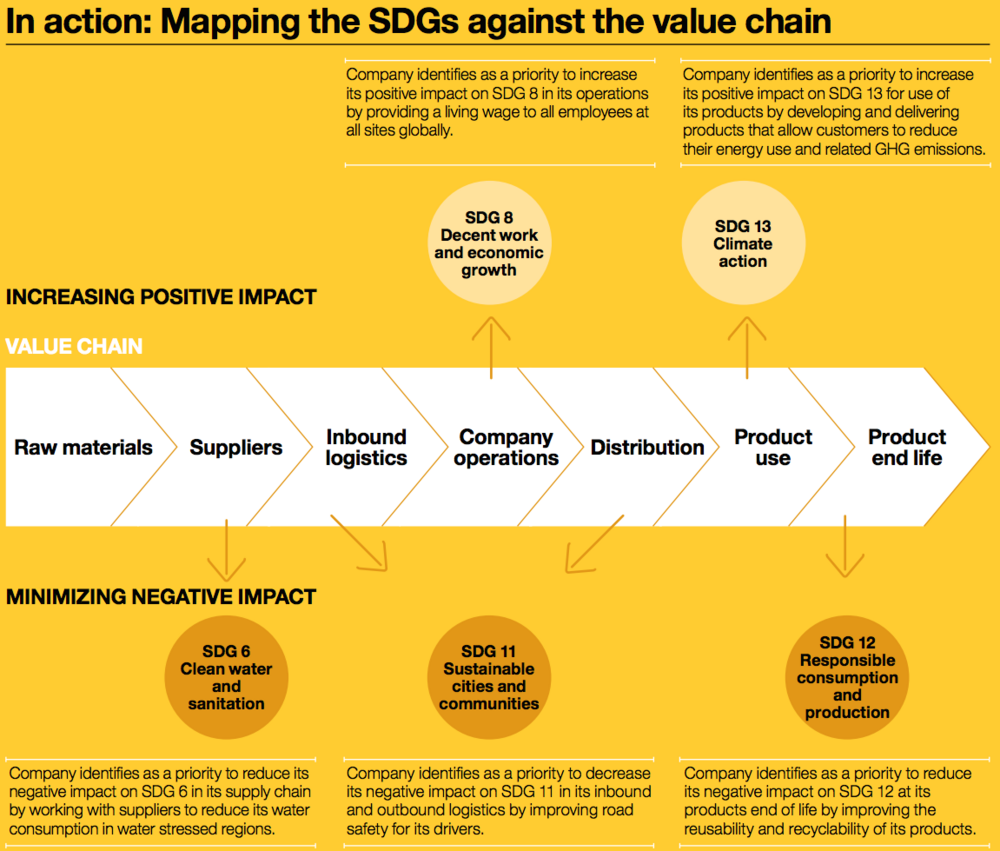Sustainability in Project and Portfolio Management
In the past, there was not desire to know the ecological impact of products, since environmental disasters were rather rare. Contrarily, today several companies have adopted sustainable strategies as long term value in their business model, in order to face environmental problems as population growth, climate change and divergent living standards. However, there is still a huge need to change the way in which companies and the society produce and consume goods.
All the environmental, social and economics issues, have been collected into a global program,Sustainable Development Goals (SDGs),containing 17 goals and 169 targets, integrated and indivisible, aimed to address the world behaviour on a sustainable path.
Governments have already agreed to follow the SDGs, now the missing piece are the companies, aligning organizational business within SDGs. Tools and knowledge useful for organisations, to achieve this balance, are offered by the SDG Compass.
Sustainability integrated with portfolio management implies many changes in the operations, focusing on material issues, engaging with diverse stakeholders, managing climate and resource related risks, creating new sustainability driven opportunities, and reporting transparently on actions and performance.
Organizational culture is defined as: “The values and behaviours that contribute to the unique social and psychological environment of an organization”. The way the culture is expressed by the leaders and the employees impacts relationship with external and internal stakeholders and the company efficiency in general. It is important to understand, how a shared vision and a common culture of sustainability is necessary to be created and promoted, to facilitate organizational understanding of core values and to help project mangers better understanding and leading a good alignment between goals and outcomes.
Driving sustainable strategy into an organization requires senior management to communicate the vision clearly. Sustainability gives to the organization a big competitive advantage, increasing expectations by stakeholders, obtaining radical transparency and contributing to support declining resources.
Contents |
A holistic perspective
The most quoted definition of Sustainability, in terms of Sustainable Development, tracks back to the Brundtland Commission of the United Nations on March 20, 1987 development that meets the needs of the present without compromising the ability of future generations to meet their own needs. [1] .This concept of thinking in the long term is becoming broaden in the business philosophy. Also if, as the famous economist John Maynard Keynes said, “in the long run we are all dead”[2] , this means that any long term policy is going to fail if the company is not able to survive in short term business condition. Shifting from a daily profit-making company into a sustainable company requires a change in perspective, from the short to the long term.The story said that many companies tried to become environmental friendly; for example, in 1975 the US company 3M set up the Pollution Prevention Pays (3P) programme, aiming to reduce costs by preventing waste and emission, a very entrepreneurial sustainable project at that time. Furthermore, the company found out that was reducing costs in maintenance, raw materials, accidents, clean-up operations and insurance, and many companies discovered those benefits. The inventor of the 3P programme was Joseph Ling, who affirmed that the environmental challenge for the next millennium "is to move from pollution prevention toward sustainable development and design for environment " [3].
Then, producing without pollution is not enough, it is necessary that products, and the whole system is reviewed and redesigned in order to fulfil the costumer and the organization needs in a sustainable manner. In more detail, having a holistic concept of sustainability, in terms of Corporate Business, a three-pronged approach takes place: the Triple Bottom Line (TBL), Figure 1, introduced by John Elkington in 1994, where economic, environmental and social goals are aligned and impact on the decision and actions of the organization. [4]
.
This concept is present in the UN World Business Council for Economic Development (WBCSD), formed by 150 international companies worldwide, where leader involve the TBL in their business case, in order to address global challenges such as poverty, gender inequality, resource depletion, etc.
The WBCSD recommends to the companies to follow the Sustainable Development Goals (SDGs) as opportunity for business and influence in the society.
Developing a business case following the values and preposition of a sustainable development it is a entrepreneurial step, in the life cycle of a company, providing competitive advantages and new opportunities.
The Sustainability Journey
The vision of sustainable value offers a compelling challenge to business. Companies that choose to start the “sustainability journey” have to go through different stages, in order to build a strong basis to be able to run for the long term :
-Exposure : includes energy savings, building efficiency and compliance projects.
-Integration : more holistic approach, starts including LCA. Better understanding of the positive relation between sustainability and business strategy.
-Transformation : the peak of the organizational change, when sustainability becomes part of the core strategic vision of the company, being part of all the decision, processes and metrics for success.
The different stages are reflected into the SDG Compass ,the Un Global Compact, as well as in the SDG Industry Matrix, guiding managers in the alignment of the company strategies within the sustainable goals.
SDG Compass
SDGs call businesses to contribute around a common framework with creativity and innovation to solve sustainable development challenges, providing the SDG Compass. Each SDG provides an opportunity for business, especially SDG12 ( Ensure sustainable consumption and production patterns) and SDG 17 (Strengthen the means of implementation and revitalize the global partnership for sustainable development).
The SDG Compass is a guide for companies and explain how they can align their strategies, measuring and managing their contribution in order to achieve the SDGs.
This guidance is designed with a focus on multinational companies, but small and medium enterprises are invited to use it as source of inspiration and adapt as necessary.
SDG Compass provide five steps that companies have to follow, always depending on where they are in there sustainability journey ( Figure 2):
Understanding the SDGs
It includes the familiarization with SDGs and understand the opportunities for the business:
-Identifying future business opportunities
-Enhancing the value of corporate sustainability
-Strengthening stakeholder relations and keeping pace with policy developments
-Stabilizing societies and markets
-Using a common language and shared purpose
Defining Priorities
The contribution of the company to each SDG and the risks and opportunities they can represent, will depend on different factors.
>Map the Value chain to identify impact areas
First of all, it is very important that the company analyze the entire value chain, from the supply base and inbound logistics, across production and operations, use and end of life of the products. Secondly, the company should start the impact assessment, realising a high level mapping of its entire value chain, as in the Figure 3. However, the map recognizes, along the value chain, where greatest impacts can be expected. This is very relevant, because studying every fragment of the chain are identified areas where :
- Company’s competencies, technologies and product portfolio contribute positively to the implementation of one or more SDGs
- Company’s activities have, directly or indirectly, negative impacts on on or more SDGs.
With the impact assessment, it will be possible to scale up positive impacts or reduce the negative one. Moreover, the transparency, about the boundaries that have been selected and business that have been excluded, is very important for the company’s life, partnerships and image. During the assessment and the mapping, the company should consider the context, as the proximity to geographical areas with low performance related to SDGs.
When the industry sector data do not contain the high impact areas, there are some tools or methodologies to help companies to recognise these areas, listed in the following table:
| Tools and methodologies | Explanation |
|---|---|
| GHG Protocol Scope 3 Evaluator | is a free web-based tool, which allows the company to measure, report, and reduce emissions at every stage of its value chain. |
| Hotspots Database | allows the company to model supply chains by country-specific-sectors, calculate labor intensity, and report on the share of worker hours at risk of social impacts. |
| Rights and Business Country Guide | sustains the company to identify, assess and address their human rights impact |
| Global Water Tool | is a free, publicly available resource for identifying corporate water risks and opportunities which provides easy access to and analysis of critical data. |
| Poverty Footprint Tool | examines the company's effect on society throughout the business model |
In order to map the value chain of the company, internal and external stakeholders have to be engaged. Developing a particular attention on their issues, needs, interests, it is easier to assess correctly the potential impact of the company on the SDGs. Also if sometimes stakeholder will not provide a complete understanding of the impact areas, often they help to have a wider perspective, thanks to information exchange.
Speaking in terms of portfolio and project management, there are different techniques to maximize the stakeholder engagement. Also if the manager is not sure about the contribution of some stakeholders, he should include them into the sustainability development processes. The manager should always let them understanding how much important they are for the company activities, and in order to be credible and transparent, he should always include the stakeholders input into sustainability planning process. In this way they can see their contribution, and improve the engagement.
The following table is a guideline for managers for providing best practices of stakeholder engagement process.

>Select Indicators and collect data
Setting Goals
Integrating
Reporting and Communication=
Benefits
The benefits gained from the alignment between business and sustainability strategies, reached once the Sustainability Journey is completed are:
-risk mitigation
-operational efficiencies
-cost savings
Consequently, other benefits will follow, as for the employees:
-improvement of engagement and productivity
For the environment:
-safeguard of natural resources
For internal and external stakeholders:
-community engagement
-human rights
-fair labor standard
Bibliography
1. Kristina Kohl , Becoming a Sustainable Organization: A Project and Portfolio Management Approach, © 2016 by Taylor & Francis Group, LLC
2. http://sdgcompass.org/wp-content/uploads/2015/12/019104_SDG_Compass_Guide_2015.pdf
3.
References
- ↑ https://en.wikipedia.org/wiki/Sustainability
- ↑ Sustainability Development and the company: why, what and how?
- ↑ P.Sorenson, ‘Pollution Prevention Pioneer’ Inventing Tomorrow,1999
- ↑ Kristina Kohl , Becoming a Sustainable Organization: A Project and Portfolio Management Approach, © 2016 by Taylor & Francis Group, LLC


